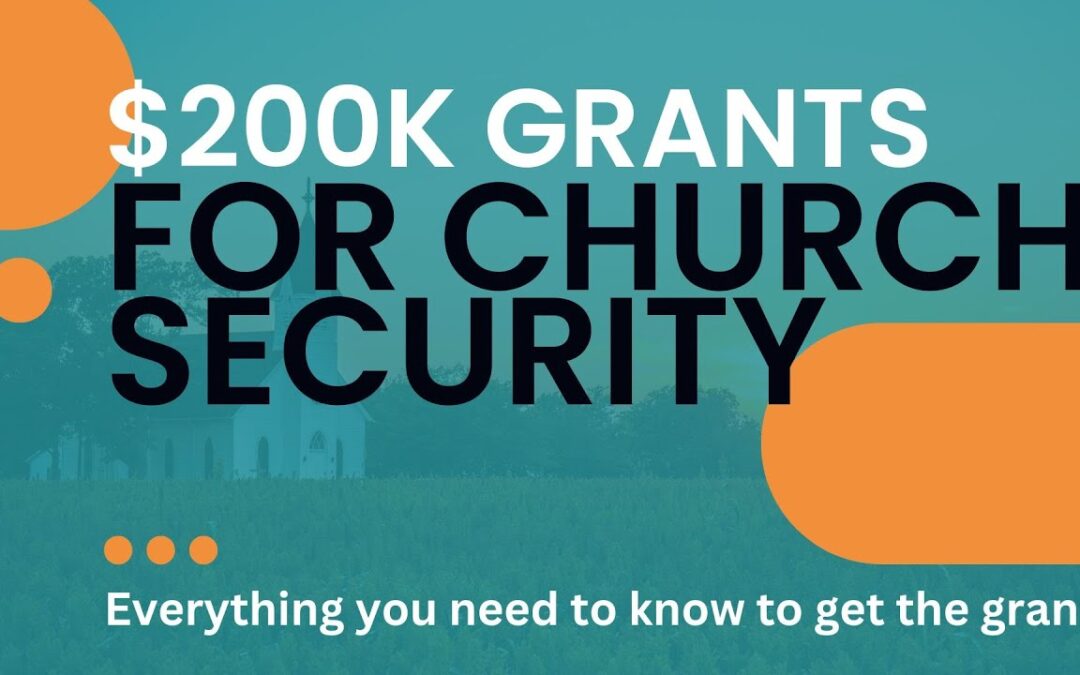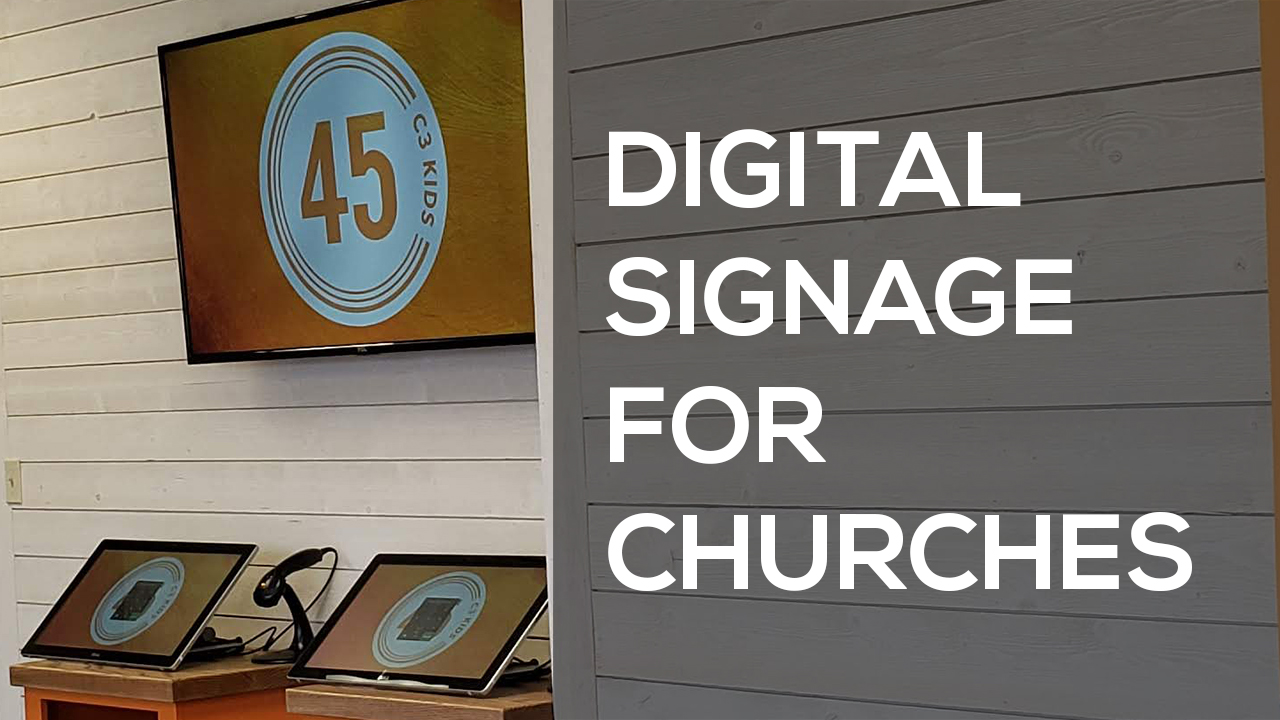In today’s world, churches and other faith-based organizations face a unique set of security risks. From incidents of vandalism and theft to the devastating potential of targeted attacks, these facilities require specialized protection to keep congregants safe and provide a secure environment for worship. Recognizing these needs, the Nonprofit Security Grant Program (NSGP), administered by FEMA and the Department of Homeland Security (DHS), offers financial support to at-risk nonprofits, including churches, synagogues, mosques, and other religious institutions.
This article explores the NSGP’s funding structure for 2024 and highlights how churches can use these resources to enhance both physical and cybersecurity measures. By understanding the funding criteria, allowable expenses, and application process, churches can take proactive steps to secure their facilities and protect their members.
The Nonprofit Security Grant Program: An Overview
The NSGP is a federally funded program designed to support nonprofit organizations at risk of terrorist or extremist attacks by providing grants for security-related enhancements. For 2024, the NSGP has a total funding allocation of $274.5 million, divided equally between two subprograms:
- NSGP-UA (Urban Area): $137.25 million designated for nonprofits within DHS-defined high-risk urban areas.
- NSGP-S (State): $137.25 million available to nonprofits in less-populated regions, expanding the opportunity to more rural and suburban areas.
By focusing on security improvements, the NSGP empowers nonprofit organizations to make critical upgrades that bolster both physical and digital safety. Churches, as centers of community and worship, are often at greater risk and thus uniquely eligible for NSGP support.
The Growing Security Needs of Churches
Churches and other places of worship face heightened security challenges that can range from vandalism and property damage to more targeted acts of violence. These risks arise from a variety of factors:
- Open Accessibility: Churches are often open to the public, creating potential vulnerabilities at entrances, exits, and gathering areas.
- Community Outreach: Many churches are heavily involved in social services and community engagement, which can expose them to threats from individuals or groups opposed to their mission.
- Cybersecurity Concerns: Churches maintain sensitive information about members, donations, and operational finances. Cyber threats to data security are increasingly common, putting congregant information at risk.
Given these vulnerabilities, securing NSGP funding can help churches address their specific security needs, providing safer spaces for worship and outreach.
Funding Allocation and Award Limits
For churches applying to the NSGP, understanding funding limits and allowable allocations is critical. The NSGP 2024 funding structure allows churches to apply for:
- Up to $150,000 per site: Churches may request funding for individual sites, allowing for targeted security improvements tailored to each location.
- Maximum of $450,000 per organization: For churches with multiple sites, the NSGP permits funding applications for up to three locations per subprogram, which means churches with locations in both urban and rural areas could receive a total of up to six site-specific awards.
This multi-site funding structure is particularly beneficial for large church organizations with multiple campuses, enabling them to address the unique security needs of each facility.
Allowable Costs: How NSGP Funding Can Help Churches
NSGP funding can cover a wide range of security-related costs that directly enhance a church’s ability to protect its premises, members, and information. Here’s a closer look at the key categories of allowable costs:
1. Physical Security Enhancements
Physical security is often the primary concern for churches, especially for those located in areas with higher crime rates or near contentious locations. NSGP funds can be used for physical improvements such as:
- Surveillance Systems: Installing cameras to monitor entrances, parking lots, and gathering areas, deterring potential threats and providing footage in the event of an incident.
- Access Control: Limiting entry points with access control systems, including keycard or biometric readers, helps restrict unauthorized individuals from accessing certain parts of the church.
- Perimeter Barriers: Fencing, bollards, and barriers can protect the church’s exterior, reducing the risk of vehicle-based threats or unwanted entry.
- Emergency Alarm Systems: Panic buttons, alarms, and intercom systems enable quick alerts to local law enforcement in case of an emergency.
These physical improvements create multiple layers of security, making it more challenging for potential perpetrators to access vulnerable areas.
2. Cybersecurity Measures
With more churches using digital systems for donations, member databases, and outreach, cybersecurity has become an essential component of overall church security. NSGP funds can be applied to:
- Firewall and Antivirus Software: Protecting church databases and networks from unauthorized access and malicious software.
- Cybersecurity Training for Staff: Educating staff on best practices, such as identifying phishing emails, securing passwords, and safeguarding sensitive information.
- Backup and Recovery Systems: Ensuring that member and operational data is regularly backed up and securely stored, enabling quick recovery in the event of a cyberattack.
By securing digital assets, churches can protect member information and continue their missions without disruption.
3. Security Personnel
Many churches benefit from having trained security personnel on-site, especially during services and special events that attract large crowds. While NSGP funding does not cover the costs of permanent security personnel, it can be used to hire contracted security services for specific high-risk times or events. This provides an extra layer of security when needed most, helping to deter potential threats and respond quickly if issues arise.
4. Emergency Preparedness and Training
NSGP funding also supports a range of emergency preparedness initiatives, allowing churches to create comprehensive response plans and train staff and volunteers in emergency procedures. Some examples include:
- Active Shooter Drills: Teaching staff and members how to respond effectively in an active shooter scenario.
- Evacuation Plans: Developing and practicing evacuation routes for quick exits in case of emergencies.
- Communication Systems: Enhancing the church’s ability to communicate effectively with local emergency services, staff, and congregants.
These training and preparedness activities not only improve safety but also foster a sense of confidence among congregants and staff.
5. Management and Administration (M&A)
A portion of the NSGP funding (up to 5% of each award) can be used to cover costs associated with the management and administration of the grant. This includes activities like financial management, reporting, and overseeing the implementation of security projects. For churches, M&A funds can be helpful in managing the complexities of a grant-funded project, ensuring that funds are used efficiently and compliantly.
Key Steps for Churches Applying for NSGP Funding
The NSGP application process involves several key steps, and it’s important for churches to prepare early to maximize their chances of securing funding.
Step 1: Conduct a Vulnerability Assessment
A vulnerability assessment identifies the specific security risks faced by the church, including physical, cyber, and operational threats. This assessment forms the foundation of the application, as it justifies the need for the requested funds. Churches can work with security consultants or law enforcement to conduct a thorough assessment, highlighting areas such as entrances, gathering spaces, and IT systems.
Step 2: Prepare an Investment Justification (IJ)
The Investment Justification (IJ) is the central part of the NSGP application. It outlines the security projects for which the church seeks funding, including:
- Project descriptions for each security improvement (e.g., CCTV installation, alarm systems)
- Connections between each project and the specific risks outlined in the vulnerability assessment
- Feasibility, expected impact, and budget estimates for each project
Each project should be tied directly to identified risks, showing how it will reduce vulnerability and enhance security.
Step 3: Submit the Application through the State Administrative Agency (SAA)
Nonprofits must apply for NSGP funding through their State Administrative Agency (SAA), which reviews applications and prioritizes them for FEMA’s consideration. Churches should contact their SAA early to confirm state-specific deadlines and ensure they meet all submission requirements. Since SAAs may have deadlines that precede FEMA’s, early coordination is essential.
Step 4: Finalize Application Materials and Submit
In addition to the vulnerability assessment and IJ, churches should prepare any additional documents required by their SAA, such as their mission statement or supplementary forms. Churches are encouraged to double-check all application materials before submission to ensure completeness and accuracy.
Important Dates for FY 2024 NSGP
- Application Start Date: April 16, 2024
- SAA Submission Deadline: Contact your state’s SAA for specifics.
- Final FEMA Submission Deadline: June 24, 2024, by 5:00 PM ET
- Anticipated Award Date: No later than September 30, 2024
Meeting these deadlines and working closely with the SAA can help churches submit a strong application that meets all requirements.
Tips for a Successful NSGP Application
- Focus on High-Impact Projects: Prioritize projects that provide the greatest improvement in security. For many churches, this may mean focusing on entry controls, emergency training, or video surveillance.
- Engage Local Law Enforcement: Building a relationship with local law enforcement can strengthen security efforts and provide valuable support during the application process.
- Leverage Cybersecurity Resources: FEMA and the Cybersecurity and Infrastructure Security Agency (CISA) offer guidelines and resources that can help churches implement robust cybersecurity measures.
Conclusion: Strengthening Church Security Through NSGP Funding
For churches facing the growing threat of violence or targeted attacks, the Nonprofit Security Grant Program offers an invaluable opportunity to enhance security and protect their congregations. By addressing both physical and digital vulnerabilities, churches can create safer environments for worship,




